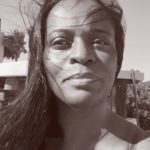We heard the drums before we saw them. A steady, staccato beat beckoned us to walk farther across the bridge during the opening ceremony of the Akumal Arts Festival and Residency. Ta-ta. Um-ta-ta. Um-ta-tat-ta-ta. Um-ta-tum.
Cresting the hill, we followed the beat until five Maya in traditional dress blocked our path into town. Their smooth, slick, muscular bodies were half-covered in paint—yellow and black like the jaguar, and cerulean blue like the snake. Gorgeous plumes of feathers sprouted elegantly from elaborate headdresses.
Juan Perez Silva, the Maya leader, greeted us on behalf of his family, ancestors and the townspeople. As he blessed the leaders of his group, his daughter held a goblet of copal resin with smoke drifting up to tickle my nose. He blew into a large, conch shell. The clear sound overpowered the noise from the vehicles driving on the highway below. Juan thanked Father Sky and Mother Earth for bringing us together.
Following his lead, we stretched our arms up in unison and offered the truest intentions of our heart to the universe so they would be touched by the divine and illuminated in our art over the next four days. Art has been integral to my healing since I moved to Akumal, Mexico, a small beach community in the Yucatan Peninsula, nearly three years ago.
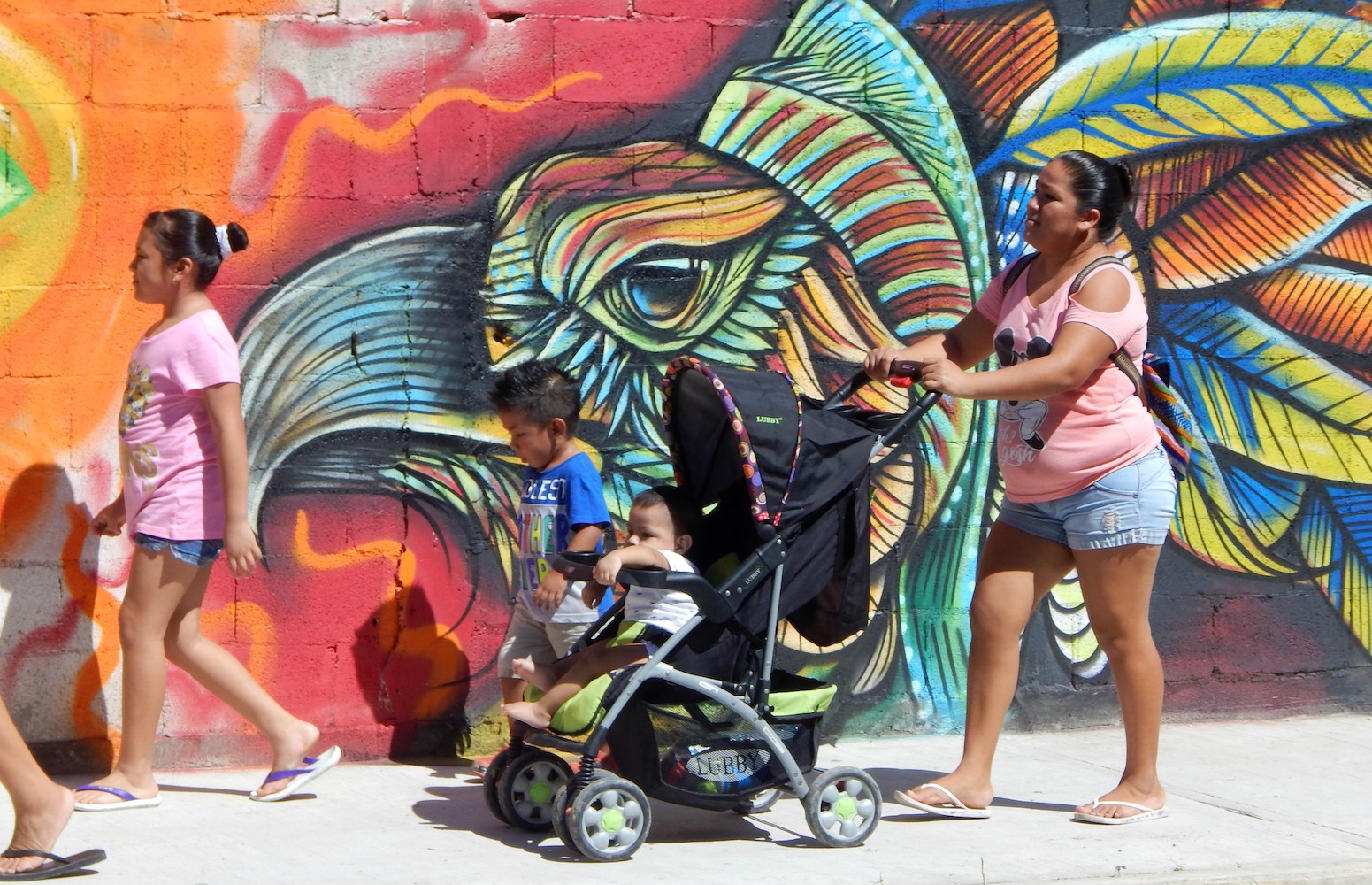
I relocated from Raleigh, North Carolina, after my mother, the last of my immediate family, died and my life fell apart. I wanted a fresh start in a supportive, creative, beach community outside of the United States. I never considered myself to be a photographer, but within a month of moving to Akumal, I participated in a local art exhibit where I showcased a series of self-portraits I created as a commentary about the absurdity of the masks black Americans wear to survive in the States; that racism forces us to disguise our cultural identities and personalities so as not to seem like a threat to white people.
Another thing that became commonplace following my move: the magical realism of Maya shamanism, seemingly appearing out of the mists to take me on a mythical journal.
Juan is one of two traditional spiritual leaders in the Akumal community. He and his family are descended from the Maya and are some of the few people actually from the area. He uses dance, drumming and ceremonies to preserve and promote Maya customs and traditions.
When I first moved to Akumal, I studied dance and drumming with Juan to learn more about the indigenous culture of my new home. I also participated in his temescal ceremony (an indigenous sweat lodge) to help me heal from the emotional and professional losses I experienced in recent years.
Art has been integral to my healing since I moved to Akumal, Mexico, nearly three years ago
The drum beats were softer now as we walked together with Juan and his family across the bridge into the Akumal pueblo. Mothers, with children gathered around their skirts, watched from their stoop. A gaggle of school children from the local library and community center skipped and danced alongside us as we made our way to the town square.
“Today, with this festival in Akumal, of unification, our goal is to heal some of the divisiveness that has separated us,” said Juan, once we were all seated. “In division, no one wins. In unity, we all do. For wherever you come from and wherever you live, at the end of the day, we are all one.”
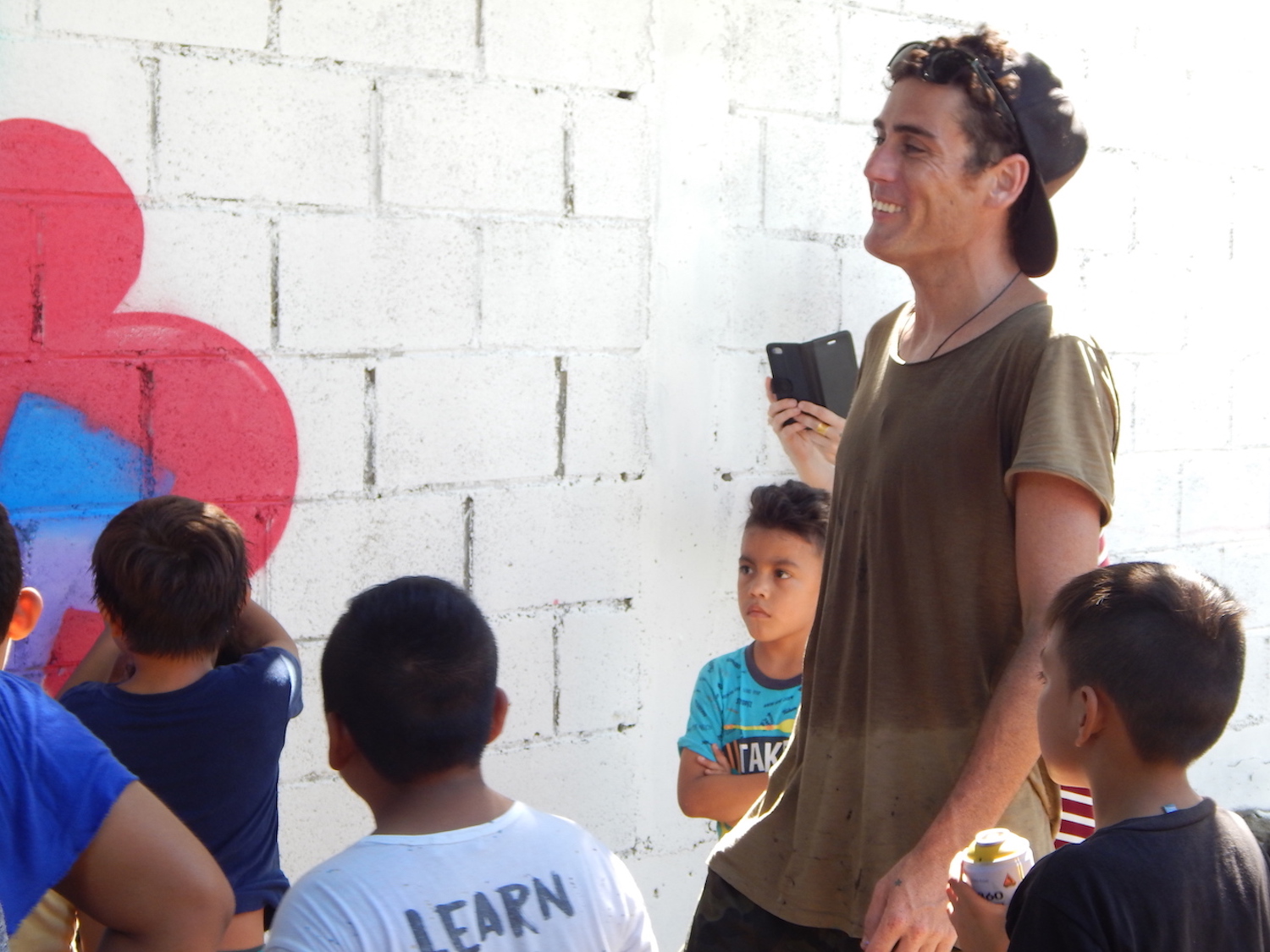
No one is from Akumal.
Unless they were born within the last decade or so, even the Mexicans who live here are from somewhere else. Geographically, Akumal is a small beach community in the Yucatan Peninsula bookended by flashy Playa del Carmen to the north and trendy Tulum to the south.
Divers, wayfarers and enterprising families from Mexico City, the United States and Spain were lured to Akumal beginning in the late 1960s by the turquoise waters of the Caribbean to the east and the lush, verdant jungles and mangroves to the west. They built a small tourism trade of dive shops, restaurants and small hotels around the sea turtles who nest and live here.
It was frontier land, where anything and everything goes. Businesses and the loose form of government that existed traded independently with neighboring British Honduras, now Belize, until 1974 when the territory of Quintana Roo became a state.
“Akumal is a special place,” said Iran Beltran, the town’s former mayor and a co-founder of the Akumal Arts Festival and Residency. “People come here for our beautiful beaches and cenotes and to swim with the sea turtles.”
A four-lane ribbon of asphalt, Carretera 307, runs straight down the middle of the town, and a hulking concrete bridge now spans the highway connecting the pueblo and beach communities of Akumal.
On the beach side are hotels, restaurants and sprawling, million-dollar homes rented to tourists. Employees who work at the businesses on the beach side live in the pueblo. Expats and snowbirds live in the smattering of hotel, residential developments and private homes in the nearby jungle and beachfront.
However, there is no cartography of heart, history and culture to unite Akumal when everyone is from somewhere else. There are no foods that are specifically from the town that were passed down through generations of grandmothers and served in local restaurants. There are no special accents like those found in Guadalajara, Veracruz or Oaxaca that mark the residents as belonging to a specific place.
I needed to feel connected, especially when I felt disconnected from my family, career, country and self. In Akumal, everything is in the process of being invented, and maybe that’s why it was the perfect place to create an Arts Festival.
Children shrieked on the playground at the Akumal Secondary School.
Some students were glad for a break from the heat and the boredom of the classroom while others were excited about the small cans of paint and voluminous paintbrushes that magically appeared that morning. This is Ground Zero for planning the Akumal Arts Festival and Residency.
“It was very, very crucial for me to have 100 percent community involvement in the festival,” said Jennifer Smith, who co-founded the event with former mayor Iran. “The way to do that is to get every child involved.”
Jennifer is as much of an Akumal institution as the sea turtles. A California blonde whose fierce love for the community and its people matches her determination to improve the quality of life for everyone, Jennifer first came to Akumal in 2000 with her husband Bartley on their honeymoon. They permanently moved here three years later and since then, they’ve built five successful businesses that employ forty local people.
It was frontier land, where anything and everything goes.
For the Arts Festival, Jennifer recruited her friends and employees to visit each of the five schools in the area and volunteer to lead the children in painting one or more flags. Public schools, especially those in rural areas like Akumal that don’t have enough students to be fully accredited, are notorious for being under-resourced. Educational basics are barely covered, let alone for “extras” like art.
“One of the high school boys was really nervous to paint a flag,” Jennifer said. “I said, ‘You can do anything. You can splatter paint. You can do finger-painting. Art can be anything.’ He said he never painted with a paintbrush before—no watercolors, no anything. Imagine being in high school and having never touched a paintbrush before. That was definitely a big thing.”
The idea to create the festival started as a conversation in February 2018 between Jennifer and Iran about paying for light bulbs and making sure the electric company provided service needed to illuminate the bridge at night.
During the conversation, Jennifer and Iran realized that what needed to be lit, in addition to the bridge, was a sense of pride and unity that had long been missing from Akumal. Unchecked greed and tourism, land disputes and protests over the charging of local residents to access public beaches had reached their toll in recent years. Strained relationships between the beach and town residents buckled under the pressure and spilled into the unkempt and littered streets. Something had to be done.
“Even though we need [to care for] the environment and you can’t survive without it, it’s not relatable,” Jennifer said. “It’s not going to move people. It’s not easy to understand. Art is the easiest thing. It’s like water. It’s everywhere.”
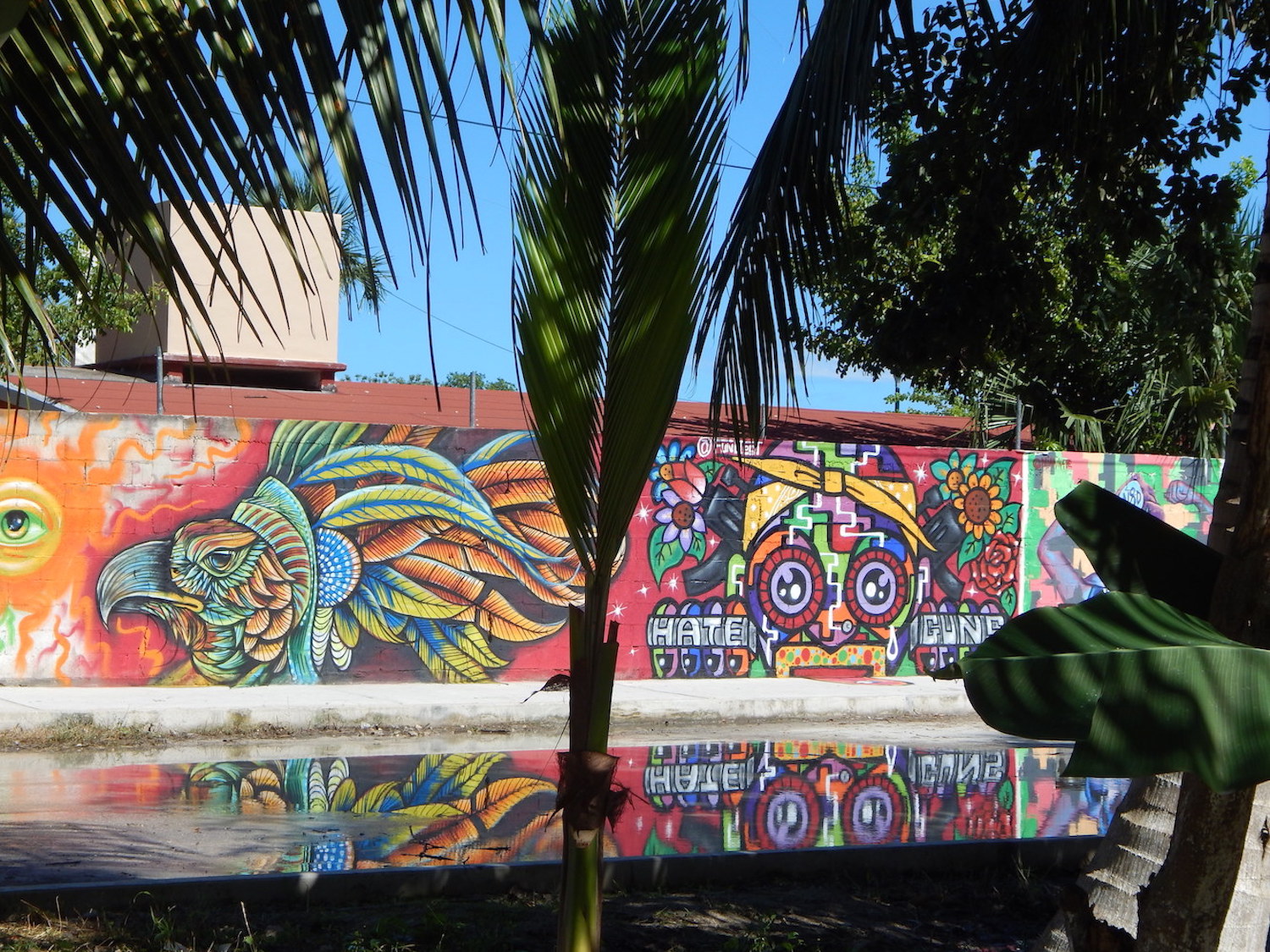
Wu-Tang Clan spit rhymes over a thumping drum track that blared from the radio on the sidewalk.
The friendly fire of teasing and camaraderie drifted over the beats. Although it was early November 2018, sweat from the heat of the Caribbean dripped on the reddened, sunburned skin of Christian Fenn, a graffiti and contemporary artist from Blackpool, UK, who goes by the name “Seca One” and his collaborator Pawski (real name Jona Taylor) as they painted the outlines of a face of a Maya man who looked surprisingly like Juan Perez Silva.
“We didn’t even know he was going to be here,” said Christian. “We just had this image in mind of a Mayan warrior, and then we met ‘Indio’ ,” Seca One said referring to Juan’s nickname. “We were like whoa, this is incredible!”
I walked around the town inhaling the intoxicating blend of synchronicity and community that permeated the Akumal Pueblo while one hundred muralists, graffiti artists, musicians, puppeteers, acrobats, journalists and photographers from Mexico, the United Kingdom, United States, Europe and Latin America sprinkled their magic.
Under the artists’ spell, the trees seemed lusher and greener, the people friendlier, and something inside felt more alive. I cried while walking the streets and taking photos with a camera I hadn’t used in years. Why hadn’t I noticed how lovely Akumal Pueblo was before?
Strained relationships between the beach and town residents buckled under the pressure and spilled into the unkempt and littered streets
Artists who were normally paid tens of thousands of dollars to create murals in Europe smiled excitedly and patiently while teaching local kids how to spray paint. A watercolorist painted and sold her creations in the park for donations and taught some of the sixty art classes offered throughout the festival. Paintings of Maya mythic warriors, giant turtles, abstract shapes, squinting girls, skulls, colorful iguanas, and languid underwater scenes appeared on surfaces and walls where there was nothing before.
Once-shy, local residents came outside and asked the artists if they would transform the dull, gray concrete of their houses into colorful stories. These whimsical murals depicting scenes and symbols of an imagined Akumal—from lush underwater imagery to a little girl riding astride a jaguar—suddenly cropped up on municipal buildings, restaurants and the only secondary school in town.
Drivers passing through honked their horns in support of the artists. Employees on their way to or from the beach hotels and restaurants where they worked stopped to talk to the artists and took photos with their cell phones.
When the unrelenting sun set, the lights came up in the town square, which looked more like a soccer field bordered by a park. Ranchero singers sang while drunkenly swaying on horseback. Circus performers wielded menacing whips that snapped, crackled and popped through the humid night air.
“They gifted their time to be here with us,” Iran said of the artists. “They showed something different to the people, who have never seen an arts festival before.”
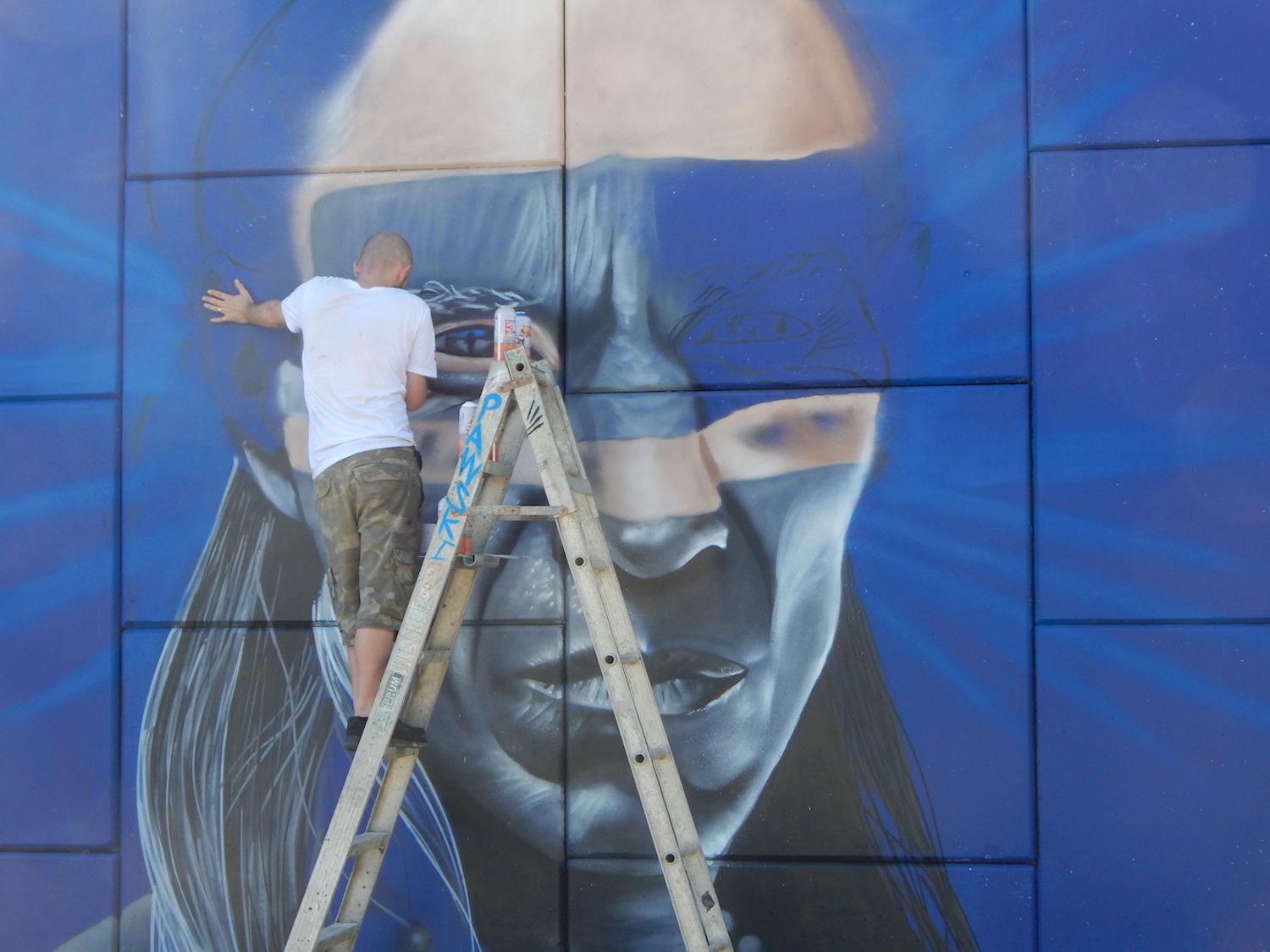
The roar of traffic buzzed in my ear as I stood at the entrance of the Akumal bridge on the pueblo side on the first hot and sunny day of the year, after months of rain and chill.
A small group of local residents gathered by the murals on the bridge. They spray painted gingerly over the silver graffiti that lacerated the murals like a scar on smooth skin. Less than a week before, a man who moved to Akumal from Guadalajara and his friends from Playa del Carmen had vandalized the murals.
“Vandalism is a pretty common thing to happen to street art around the world,” said Jake Gardner, a street artist who paints under the name “Klonism.” Jake moved to Akumal four years ago from Leeds, UK “I didn’t think it would happen here that much because the local community loved the murals.”
Art brought us together. Basic conventions of line, color and form helped us forge a shared identity.
What happened next shocked Iran and other community leaders on both sides of the bridge. Enraged at what felt like an attack on their community, the townspeople caught the vandals and turned them over to the local police. “They were upset because they knew the murals and paintings weren’t just paintings,” Iran said.
Kaori Sueki, a Japanese immigrant to Akumal who runs the town library, painted alongside Marieke Brown, a real estate broker from Scotland and her two children with Scott, an American whose grandfather was one of the original owners of the dive shop. Two high school boys from Akumal worked alongside Jake to touch up one of the murals. Christian, who was already visiting the area from Leeds, explained to Diego, a yoga instructor and musician from Playa del Carmen by way of Mexico City, which spray paints were the best to use to cover the silver streaks. Jennifer, like a conductor of a great symphony orchestra, harmonized the controlled chaos.
None of us were from Akumal. Our life journeys began in other lands, in other languages and with other people. But art brought us together. Basic conventions of line, color and form helped us forge a shared identity. Together, we created and preserved beauty in a place where we welcomed the breezes from Father Sky and Mother Earth that supported our steps.
We were neighbors, friends, family and characters of the shared and evolving story of Akumal. I won’t swear to it, but on that day I faintly heard drums in the distance welcoming me home.
